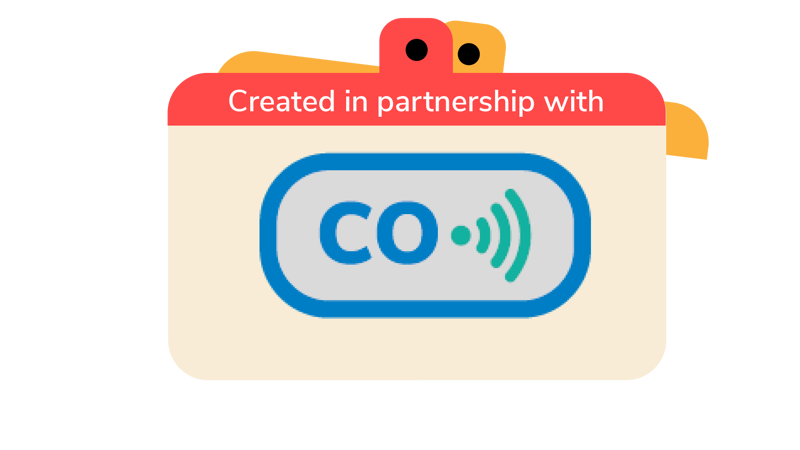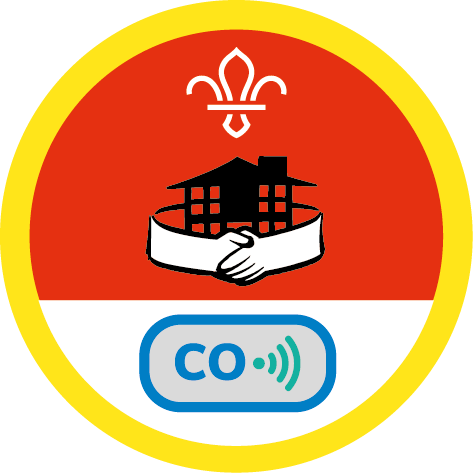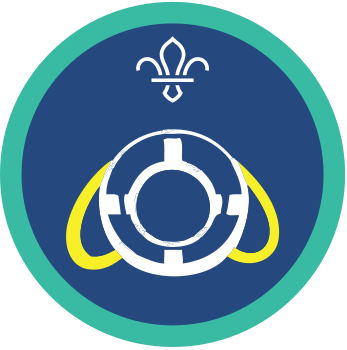
Solve a campsite mystery
You’ll need
- Pens or pencils
- Scrap paper
- Printed clue cards
- Carbon monoxide alarm
Before you begin
- Use the safety checklist to help you plan and risk assess your activity. There's also more guidance to help you carry out your risk assessment, including examples. Don’t forget to make sure all young people and adults involved in the activity know how to take part safely.
- Make sure you’ll have enough adult helpers. You may need some parents and carers to help if you’re short on helpers.
Planning this activity
- This activity is designed to help young people recognise the signs of carbon monoxide poisoning and how they can keep themselves and their family safe. Make sure you check any gas-based appliances in your meeting place and in your equipment stores, or at your campsite, before beginning this activity to ensure everyone stays safe.
- Write out or print out the clue cards and place them around your meeting place. Some of the clue cards will need to have enough adult volunteers or young leaders to act out the clue. You may want some adult volunteers to be assigned to supervising the game, too.
Time to solve a mystery
- Gather everyone together in a circle. Remember not to mention the activity is about carbon monoxide (CO) – as that’s the answer to the game.
- The person leading the activity should explain that there’s something wrong with their meeting place 'campsite' and they need everyone to become detectives and help to solve the mystery.
- Everyone will need to work in their team to discover the clues hidden around the meeting place, as well as interview to some adult volunteers.
- Split everyone into small teams and give them pens and paper, so they can keep note of the clues. Hopefully they’ll be able to work out what is wrong.
Witness statements
Give each of these statements to an adult volunteer or young leader. If you don’t have enough adult volunteers, young leaders or parents and carers to play the roles, you can stick these up around your meeting place instead.
Witness 1:
It was my turn to cook dinner for my group. All the other meals that have been made have been great, so I felt under pressure to make mine good. However, the others were lucky because they could cook outside in the sunshine. In this wet weather, I knew it was going to be a miracle if the stoves stayed lit without wind shields, so we moved inside the mess tent to cook. It seemed like a good solution to me.
Witness 2:
Young people these days complain more than they did in my day. There’s been so much moaning about the weather. It’s just a bit of rain and wind. Eventually we got them outside and they had a great time, everyone was running around for hours. As soon as we got back inside the mess tent the moaning continued. This time it was that they were dizzy, or having trouble breathing, or had a headache. I told them to drink some water and sit down for a while, so that should sort them out.
Witness 3:
I don’t want to judge my group’s cooking, but I didn’t feel good after eating that meal. I felt super sick and I’ve even vomited a bit. Usually that’d help me feel better, but my stomach still really hurt. I don’t think the chicken was cooked enough or something.
Witness 4:
You’d think after cooking in the mess tent and having all of us piled in there that we'd have been too warm. However, we were all still freezing from the rain. We needed to get warmed up for our evening activities, so we left the stove burners on for some extra heat. It worked really well. I thought it might smell funny, but we were so busy that we didn’t notice anything.
Physical clues
Place these clues around your meeting place. If you don’t have the items described in the clues, we have included some illustrations in the PDF for you to print off.

Physical clue 1
A gas canister that was left on site by someone else which was then used for the cooking

Physical clue 2
An old stove that was used to cook on

Physical clue 3
The portable carbon monoxide alarm that was expired

Physical clue 4
The mess tent is closed without any ventilation
Solving the mystery
- Gather everyone back together when they’ve read all the clues.
- Ask everyone to write down what they think the source of the problem is and hand it to an adult volunteer. Hopefully everyone worked out that the problem was carbon monoxide.
- This is a great opportunity to facilitate a discussion about CO safety. Ask everyone to think about or name the clues that helped to identify CO as the culprit. They are:
-
- the symptoms of CO poisoning experienced by the young people in the mess tent and after dinner
- Gas canisters that had not properly been checked being used to cook with
- Cooking on gas stoves without proper ventilation of the space
- Using an old stove to cook on
- Having a carbon monoxide alarm but it was expired
- Discuss the six main symptoms of CO poisoning: headaches, nausea, dizziness, breathlessness, collapse, and loss of consciousness.
- Ask the group to think about potential sources of CO around their homes. Can anyone think of any?
- See if anyone knows how we can help stay safe from carbon monoxide at home. Do they know when their appliances were last serviced and do they have a working CO alarm?
- Have a carbon monoxide alarm ready to show everyone, and demonstrate how to test if it is working properly. Remind everyone that this test should be done weekly.
Reflection
This activity was about being healthy and developing skills, so we can keep ourselves and other people safe. By understanding more about carbon monoxide and how it can be dangerous, what do you think you can do in the future to protect yourself from carbon monoxide?
There are plenty of things around us that might seem scary or dangerous, but we just need to be careful with them. It’s just the same as wearing shin pads when we play football or a helmet on our bikes to stay safe.
What other things can we do to help stay safe? It could be sharing what we’ve learnt about carbon monoxide, being ready to spot the symptoms, checking our homes and getting a carbon monoxide alarm, or asking questions about other things we want to learn how to use safely.
Safety
All activities must be safely managed. You must complete a thorough risk assessment and take appropriate steps to reduce risk. Use the safety checklist to help you plan and risk assess your activity. Always get approval for the activity, and have suitable supervision and an InTouch process.
- Fires and stoves
Make sure anyone using fires and stoves is doing so safely. Check that the equipment and area are suitable and have plenty of ventilation. Follow the gas safety guidance. Have a safe way to extinguish the fire in an emergency.
- Carbon Monoxide
Carbon monoxide (CO) is a serious risk, so make sure you cook or use appliances in a properly ventilated area. If you need a sheltered cooking area, consider an open sided gazebo, dining shelter or a marquee that has sufficient air circulation and ventilation. Take a look at our further guidance on carbon monoxide.
- Active games
The game area should be free of hazards. Explain the rules of the game clearly and have a clear way to communicate that the game must stop when needed. Take a look at our guidance on running active games safely.
Have plenty of adult volunteers and young leaders to support facilitation of this activity. To make it easier, you may need volunteers stood by every clue in order to read it to the young people.
- Make sure your space is suitable for everyone to move around safely.
- Some people may struggle with writing down, reading or remembering clues. They could be teamed up with a partner who can help them do this or support them by doing it for their team.
- Consider getting some props or using illustrations to show some of the things mentioned in the meeting place if your meeting place doesn’t have them.
All Scout activities should be inclusive and accessible.
You can visit our guidance on carbon monoxide safety. Remember to regularly check your meeting place and equipment to make sure it’s safe, such as by having a carbon monoxide alarm or a yearly service on gas equipment. You could also run some more of our activities to learn about the dangers of carbon monoxide.
Learning about dangerous things can sometimes be a little scary. Make sure to allow time for answering questions to help reassure everyone and make them feel safe.

